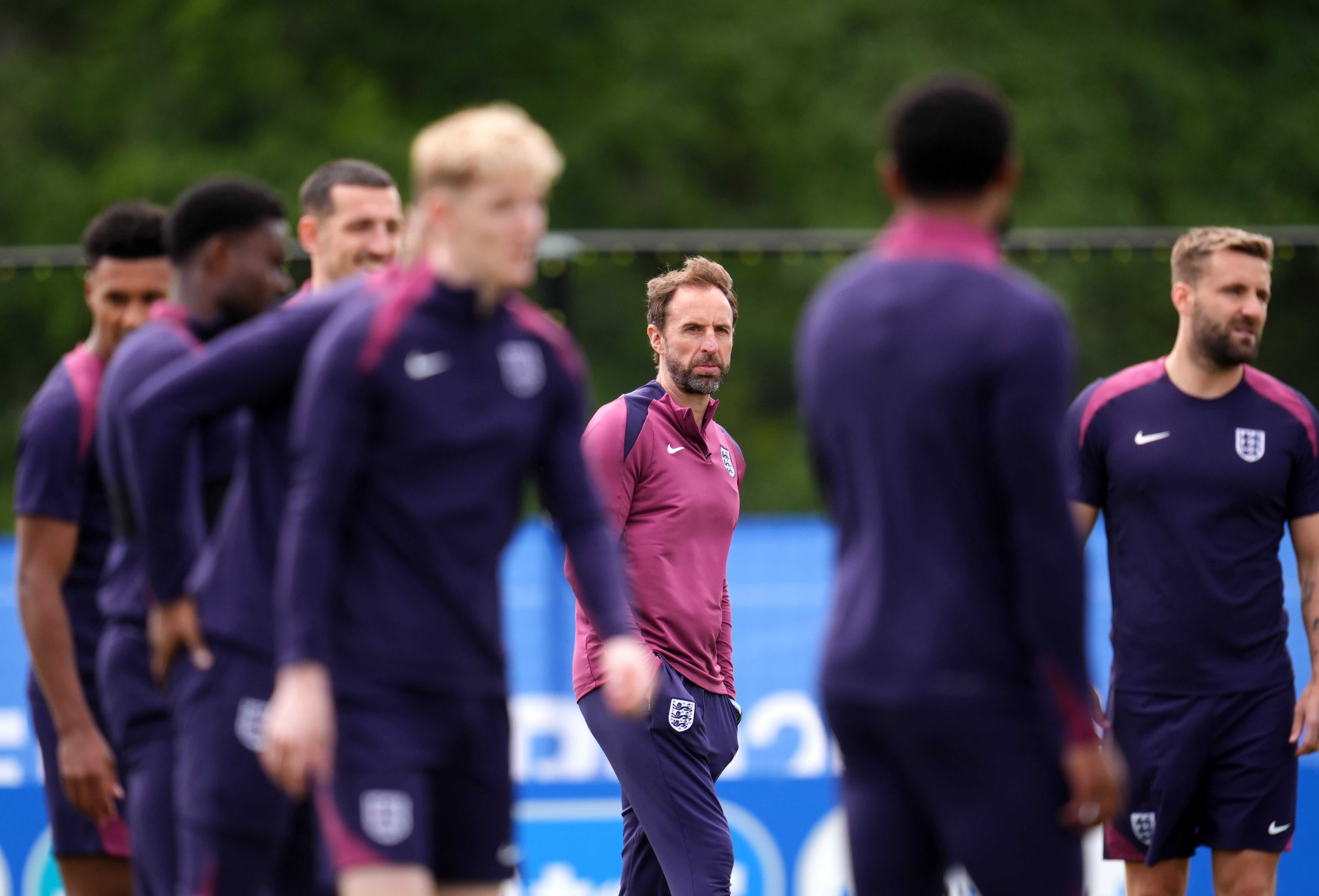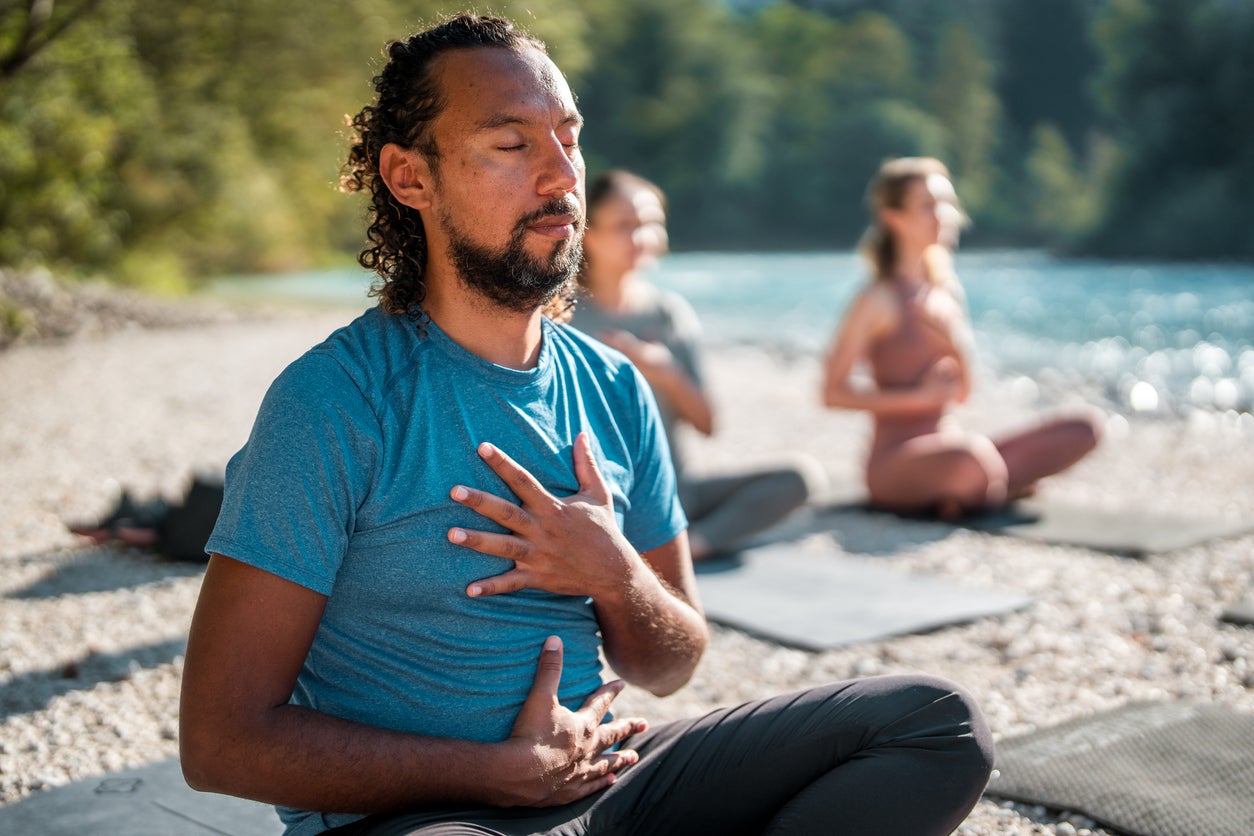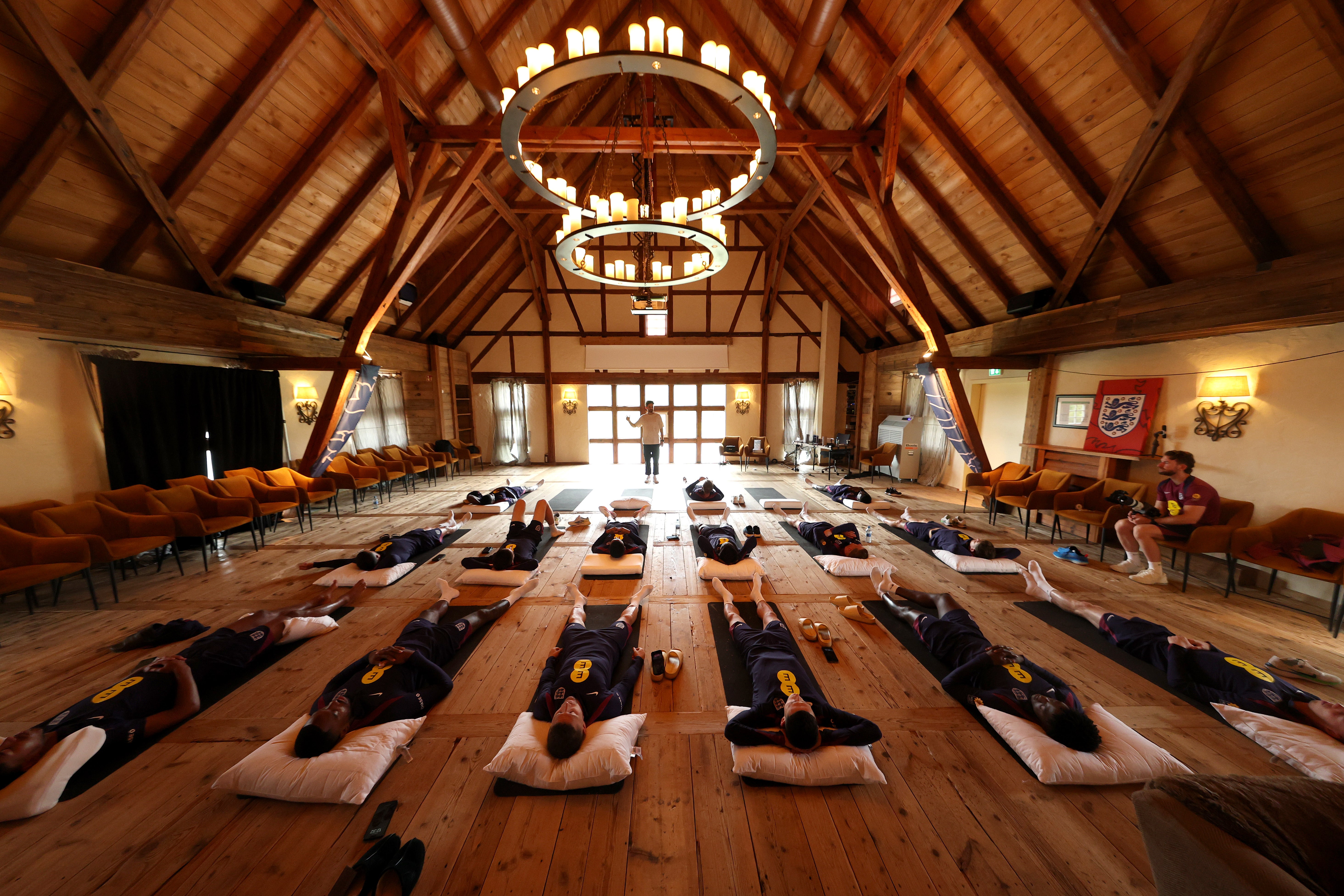The health trick Gareth Southgate’s England team are using to give them a winning edge
When the Three Lions train there is a focus in camp on how their breathwork, as well as their footwork, can give them a winning edge. As Southgate’s squad take on Spain in the Euro 2024 final, Suzy Cox looks at the experts drafted in to help and why they believe changing the way you breathe helps change how you think and feel

There are few words more triggering to an England fan than “penalties”. Yet when the Three Lions faced Switzerland in the Euros last Saturday, Cole Palmer, Jude Bellingham, Bukayo Saka, Ivan Toney and Trent Alexander-Arnold hit five spot-on spot-kicks – earning the team a place in the semi-finals against the Netherlands.
It was an epic feat. So what was the secret to their sudden penalty power? Harder drills, canny substitutions, bananas pre-match rituals? No, pundits believe it’s all down to the team focusing on not just their footwork but their breathwork too.
It’s since been revealed that manager Gareth Southgate (a man acutely aware of the pressure of a penalty himself) drafted in a “breathwork expert” to get the team match fit.
Respiratory coach Stuart Sandeman – who promises that “by changing the way you breathe, you can transform the way you think and feel” – began working in breathwork after tragically losing his girlfriend to cancer.
Now the best-selling author of Breathe In, Breathe Out, a guide on how to breathe for “better sleep, stress management and improved self-esteem and mental health”, Sandeman has clients including Olympic athletes and high-profile business execs.
“There’s no greater indication of the powerful link between breathing and performance than @england including breathwork to aid the team’s recovery at @euro2024 after Sundays [sic] win,” wrote Sandeman (“@breathpod” to his 83,000 followers) on Instagram, from the training camp in Germany, posting a video of him coaching the team. “I’m humbled that they chose me to lead these sessions.”
One person unsurprised to hear Southgate added breathwork to his team’s already hectic schedule is somatic movement, breath and yoga educator Nahid de Belgeonne. She says there’s ample evidence that “breathing consciously” before a stressful moment can really help you focus.
“There’s so much research – such as studies of students doing pre-exam breathwork and how it positively affects their results – you can’t ignore the mental aspects of the game,” Nahid says. “Any smart captain would have gotten in somebody working on this, [to help players maintain] a really resilient nervous system under pressure. You can’t just think of yourself as a cognitive mind alone.
“You have to think about how you respond to things – of who you are as a total human being, and that’s made up of the physiology and the sensations of your emotions, your actions, your feelings. I imagine players are using breathing exercises to calm their nervous systems down.”

Nahid – who also works with athletes to improve their game – suspects an exercise such as the Marksmen’s Breath could be the one the players used (breathe in for four, pause for four, breathe out for six, pause for two).
Sceptics may ask: when breathing is something we all do, all day, every day, do people really need lessons in how to breathe properly? “‘Conscious breathing’ is very different to how we ‘normally’ breathe, where we maybe hold a breath or breathe very quickly,” explains Nahid. “Your emotional state is really apparent in how you breathe.”
Our first mistake? Most of us are doing it far too fast. “In the UK, people breathe between 12 and 16 breaths a minute. In America, it’s something like 18 to 22 breaths. But actually, that’s a lot – it’s like overclocking the system.”
In her book Soothe, Nahid explains that studies show breathing at a pace of around five to seven breaths per minute can balance, strengthen and create resilience in our stress response systems, counteracting the effects of excess stress and trauma on our emotion regulation and physical health.
Breathing at this pace allows the nervous system to swing between the sympathetic (“go!”) and parasympathetic (“no-go”) response with each inhalation and exhalation, which results in balance. This is because the inhalation activates the “go” part of your nervous system, whereas the exhalation activates the “no-go” response.
Conscious breathing is very different to how we ‘normally’ breathe, where we maybe hold a breath or breathe very quickly. Your emotional state is really apparent in how you breathe
Second mistake? We’re also breathing higher up in our chests – meaning we’re using the sympathetic nervous system at the top of the lungs, over the parasympathetic one (the lower part). In other words, if you’re constantly using the upper “go, go!” section, “you’re constantly sending yourself into a state of alarm,” Nahid warns. “All of us do it because we’re not thinking about our breath.”
Which is why breathwork is so effective. “Conscious breathing will enable you to breathe more functionally,” says Nahid. “Every function of your body – from thinking to digesting to moving – requires oxygen. When these metabolic processes take place, carbon dioxide is the waste product. You inhale to take in oxygen, which is delivered to the red blood cells and carried around the body, and you breathe out to get rid of carbon dioxide. Your blood has an optimal pH level – this defines whether the blood is more acidic or alkaline – and to maintain the pH level you need to get rid of the waste products.”
Breathwork could also help with flare-ups which see teams lose valuable time to scuffles. “You cannot afford to do that as a professional sportsperson,” Nahid says. “You have to be able to recover quickly and be resilient emotionally. You’ve got to just keep your eye on the ball, literally, and to keep your focus and stamina.”
The sheer speed of the world we live in has led to the popularity of breathwork in recent years. The 24-hour news cycle, social media, addiction to mobile phones… “The 60-, 70- and 80-year-olds I work with – who can remember a time before the internet – move and breathe very differently to the 30- and 40-year-olds I see,” says Nahid. “We’re over-stimulating our brains. We’re training ourselves to have a short, shallow focus.”
There’s also been a cultural shift in sport which means practices such as breathing exercises are now seen as game-changing rather than a distraction. Never before have high-profile athletes talked – and acted – more openly when it comes to stressing the importance of their mental health.

New Netflix documentary – Simone Biles: Rising (out 17 July) – shows the record-breaking gymnast preparing for the 2024 Paris Olympics after withdrawing from Tokyo 2020 due to struggles with the “twisties”.
Ben Stokes, the England Test captain, took a six-month break from cricket in 2021 after suffering from panic attacks. And in 2020, Grand Slam champion Naomi Osaka withdrew from the French Open for mental health reasons. The message is clear: our minds and bodies are intrinsically linked and even professional athletes can’t function if the two are not in sync.
And in a time where we could have hit “peak” in terms of what athletes can physically achieve, coaches can’t ignore that the real way to improve performance lies in the mind, not the body.
“The next game-changer is neuroscience,” said Arsène Wenger in 2020. “We are at the end of the improvement of physical speed. The next step will be to improve the speed of decision-making. The speed of execution, the speed of coordination and that’s where neuroscience will come in. In the last 10 years, the power and speed of individual players has improved, but now you have sprinters everywhere. The next step certainly will be to improve the speed of our brains.”
Three ways to breath better
One: Breathing through panic
“If you’re in a moment of panic, a great exercise is the ‘physiological sigh’. Breathe in through the nostrils, then take another sniff – as if you were taking a bit more air in – then open your mouth and gently, slowly, let it all out. Do that two or three times. It can help with panic attacks or if you have extreme anxiety.”
A Stanford Medicine study showed that just five minutes of this exercise can lower anxiety, improve mood, and even decrease rates of breathing at rest.
Two: Breathing through stress
“I teach clients a very simple ‘six seconds in, six seconds out’ breath,” says Nahid. “You breathe in and out through the nostrils. You let your belly rise on the inhale. Your belly falls on the exhale. Studies have shown that over time, it really helps to regulate your nervous system. It also brings the frequency of your brain, your lungs and your heart back into coherence. And when everything’s working together, your system feels it’s safe which calms everything down.”
Three: Breathing for sleep
For a better night’s sleep, Nahid recommends a “4, 7, 8” breathing technique. “Exhale completely, and make a whooshing noise as you do it, then press your lips together, and inhale through the nose for a count of four seconds. Lightly hold your breath for a count of seven seconds, then exhale again for eight seconds, making that whooshing sound lightly. Do that four times, and try to eventually work it up to about eight reps.”





Join our commenting forum
Join thought-provoking conversations, follow other Independent readers and see their replies
Comments